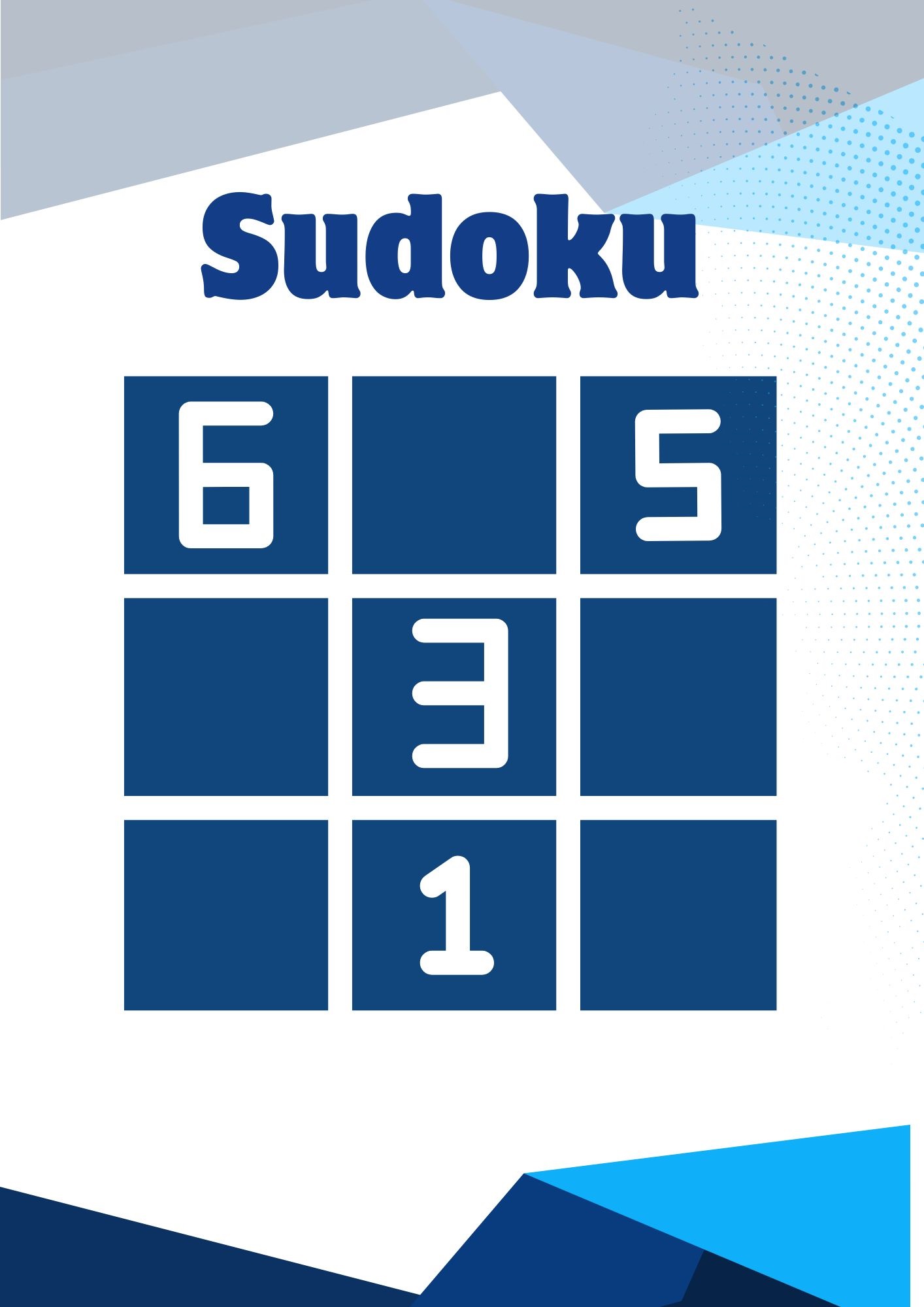Learn how to use the Swordfish strategy in Sudoku with this simple guide. Perfect for players moving beyond basic techniques like X-Wing.
If you’re already comfortable with techniques like Naked Pairs or X-Wing, chances are you’ve at least heard of Swordfish – a powerful advanced Sudoku strategy that many players turn to when they hit a wall. But is Swordfish really as complicated as people say? Let’s break it down and find out!

What is the swordfish strategy in Sudoku?
Swordfish is a logic-based solving method that helps you eliminate incorrect candidates from specific rows or columns, based on repeating patterns in three rows and three columns.
In simple terms, Swordfish is an upgraded version of the X-Wing technique.
Swordfish pattern requirements:
- A certain digit (say, the number 6) appears only two or three times as a candidate across three different rows.
- These candidates must be located within the same three columns.
- If this condition is met, you can eliminate that number as a possibility from any other cells in those three columns – except for the ones in the original three rows.
This strategy works both row-wise and column-wise, as long as you have the 3×3 layout.
How to apply the swordfish strategy
Step 1: Pick a digit to analyze (e.g., 5). This is your “Swordfish number.”
Step 2: Look for three rows where the number 5 appears only two or three times as a candidate in each row, and these candidates are all aligned in the same three columns.
Step 3: Double-check those three columns. If the number 5 only appears in those same three rows within the selected columns and nowhere else – you’ve found a Swordfish pattern.
Step 4: Eliminate the number 5 from any other cells in those three columns, as long as they’re not in the original three rows. Those cells can no longer be 5.
Tip: To make spotting this easier, use the “candidate” or “note” feature in your Sudoku app or write them in pencil if you’re solving on paper.
Is swordfish really that difficult?
For beginners:
If you’re new to Sudoku, Swordfish can feel overwhelming at first. It requires scanning multiple rows and columns and seeing patterns across the grid, not just filling in obvious numbers.
You’ll need a solid understanding of how candidates work and how numbers repeat in logical positions.
For intermediate players:
If you’re already familiar with the X-Wing strategy, then Swordfish won’t feel too far out of reach. Think of it as the next level up: instead of 2 rows and 2 columns, you’re just expanding the concept to 3 rows and 3 columns.
The main challenge lies in spotting the pattern, not in understanding the logic.
Why does swordfish feel hard?
- It’s hard to spot, because the relevant rows and columns aren’t always next to each other.
- It’s easy to miss, especially if you don’t write down candidate numbers.
- It’s difficult to use without proper notation, which is why candidate notes are essential.
When should you use the swordfish strategy?
- When basic and intermediate techniques no longer help (like Naked Pair, Hidden Triple, etc.).
- When you try X-Wing and find that no valid pattern exists.
- When you notice a number repeating exactly 2–3 times in three rows or columns.
Practice tips to master swordfish
- Start with Hard or Expert-level Sudoku puzzles, Swordfish rarely appears in easy puzzles.
- Always use candidates (notes) to help identify patterns, without them Swordfish is almost impossible to see.
- Train your eye to recognize patterns, or use highlighting tools available in many Sudoku apps.
Swordfish isn’t logically complex, but it does demand strong observation skills and careful note-taking. If you’re already using X-Wing and want to tackle tougher puzzles, Swordfish is a must-have technique in your Sudoku toolkit.
Want to practice and master the Swordfish strategy? Visit Sudoku to play puzzles of all levels and hone your skills every day!
